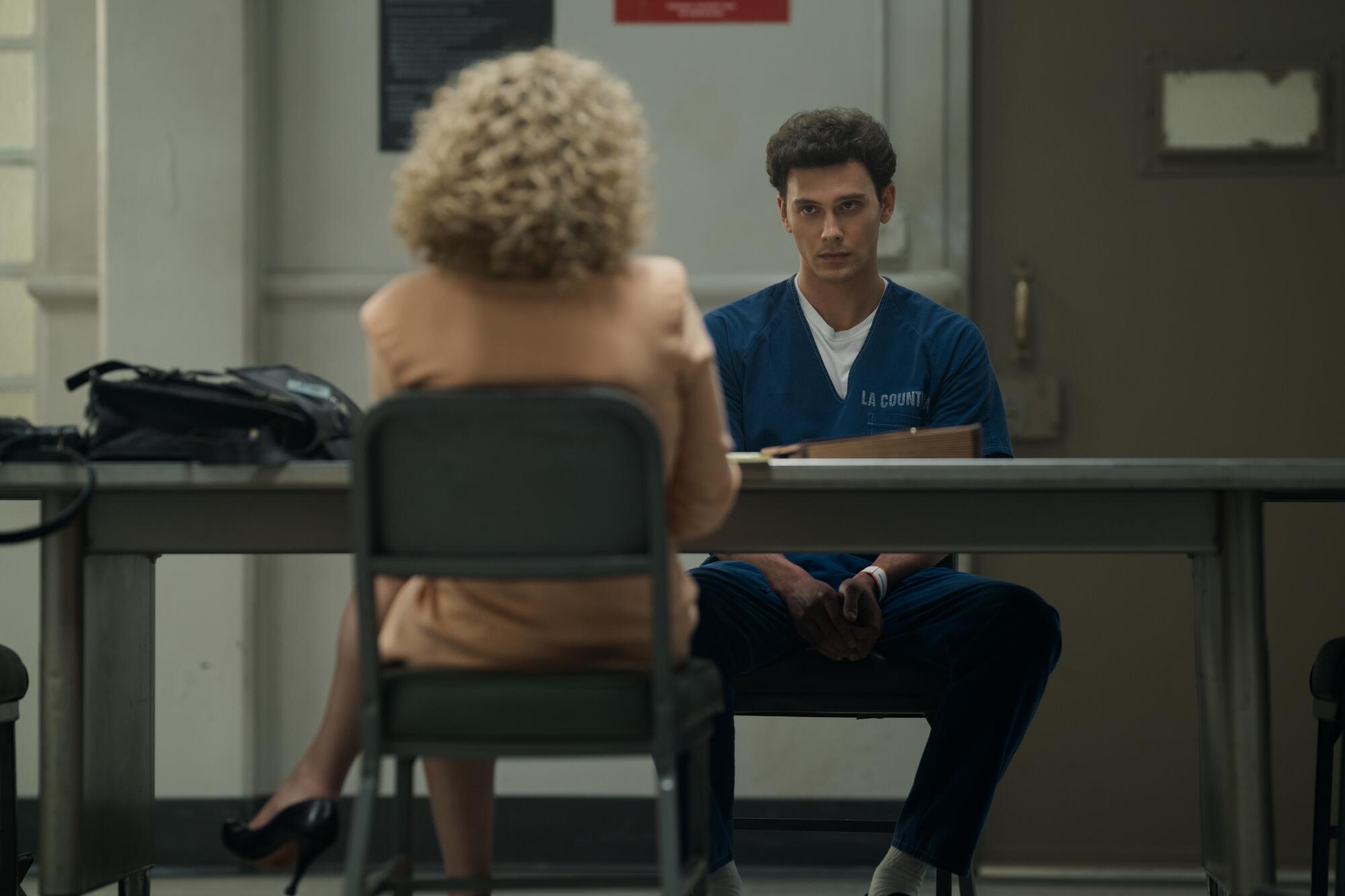It was {that a} “one shot,” or “oner,” was solely related to motion pictures.
However the mixture of status tv and superior know-how has made it extra widespread for the small display to showcase the ballet of course, cinematography, appearing and extra required to make it really feel like an episode or scene is filmed in a single steady take.
The shootout gone awry within the first season of HBO’s “True Detective” garnered Emmys for cinematographer Adam Arkapaw and director Cary Joji Fukunaga and continues to be talked about in cinephile circles with a hushed reverence. The approach can also be what made the long-winded “walk-and-talk” scenes of NBC’s “The West Wing” so memorable, and what saved the adrenaline flowing for “Review,” the Season 1 episode of Hulu’s “The Bear” that garnered Emmys for director Christopher Storer and the present’s sound mixing and modifying crew members.
This season, although, Emmy contenders are taking it up a notch. Oners are omnipresent, used for grueling struggle scenes (HBO’s “House of the Dragon” and Disney+’s “Daredevil: Born Again”); trippy thoughts warps (Apple TV+’s “Severance”); documentary-style realism (Max’s “The Pitt”) and brutal examinations of crime and its repercussions (Netflix’s “Adolescence” and “Monsters: The Lyle and Erik Menendez Story”). In comedies, Apple TV+’s “The Studio” is full of oners, together with an episode-length instance a few movie manufacturing’s quest to attain an ideal one shot at sundown. (The episode is, after all, known as “The Oner.”)
Charlie Cox in “Daredevil: Born Again.”
(Marvel Tv)
“We call it a dance with the actors,” “The Pitt’s” director of pictures, Johanna Coelho, says of the collection’ immersive fashion. “We have two camera operators, and they both really learn to know how the actors move. But the actors learn to see how they move with the camera.”
The collection’ digital camera crew is within the actors’ faces a lot that they should put on medical scrubs, lest they get caught in a background shot. And Coelho says manufacturing designer Nina Ruscio examined about 50 shades of white paint for the set’s hospital partitions to search out one that will stability everybody’s pores and skin tones as a result of the scenes circulation so routinely into one another that the lighting couldn’t at all times be adjusted.
The growing use of oners additionally displays speedy technological transformation. “Adolescence” director Philip Barantini says he would have struggled to movie his four-part restricted collection in episode-length one pictures as lately as three years in the past. The crew shot with a Ronin 4D, an reasonably priced and light-weight digital camera that might simply be handed to totally different operators. (Director of pictures Matt Lewis turned such a fan that he purchased one for himself.)
The important thing to utilizing the oner efficiently — and avoiding accusations of gimmickry — is to make sure the fashion doesn’t outshine the story, says Barantini, who additionally used the approach for his restaurant drama “Boiling Point.” Certainly, although the oner is ceaselessly related to a quick tempo, it can also gradual issues down, making it exhausting for audiences to look away. As an illustration, “The Hurt Man,” the fifth episode of “Monsters,” is the shortest of the season at simply 36 minutes. However director Michael Uppendahl makes use of that total time to zoom methodically in on actor Cooper Koch’s Erik Menendez as he particulars horrifying tales about his household.
Working with showrunners Ian Brennan, who wrote the episode, and Ryan Murphy, in addition to cinematographer Jason McCormick, Uppendahl introduced in a big crane that might push the digital camera in so slowly that audiences wouldn’t instantly discover. It additionally may tilt the digital camera and recalibrate if pace or sound have been off.
“It does take a certain kind of actor to be able to maintain that kind of stillness without constricting performance,” Uppendahl says of Koch, including, “He’s a young performer, and I didn’t know if he was able to do that.”
They acquired the scene in 10 takes.

Ari Graynor, left, and Cooper Koch in “The Hurt Man” episode of “Monsters: The Lyle And Erik Menendez Story.”
(Miles Crist/Netflix)
“The Studio” co-creator Evan Goldberg, who additionally co-directed each episode with collection star Seth Rogen, notes the approach dictates that the plot can comply with solely a single storyline. As soon as they determined to movie episodes this fashion, he says, “We had to rewrite every single scene of every single episode to accommodate it.
“We knew we were going to film it that way before we wrote it,” Goldberg explains. “But then once we hit the ground on production and actually looked at the scripts, we realized that we had to make the jokes end when they leave a room and … if there’s someone upstairs and downstairs yelling at each other, are we actually gonna be able to do that?”
A filming error additionally means a a lot greater scene reset than a standard shot.
“Daredevil” director Aaron Moorhead has what he calls the Filmmaker’s Prayer: “May the camera, the script and the actors all want to do the same thing. Amen.”
Moorhead and directing companion Justin Benson filmed three episodes of the motion drama’s first season, together with the premiere episode, which incorporates a oner of a struggle scene down a slender hallway. This helped set up the digital camera’s language for the present and the way it could transfer. He says it’s “not exactly harder” to movie a oner; “it’s just a very different skill set.”
“Almost every time we’ve ever tried a oner it succeeds,” Moorhead says, including, “The thing that’s the most challenging about it is you have to commit to everything.”

